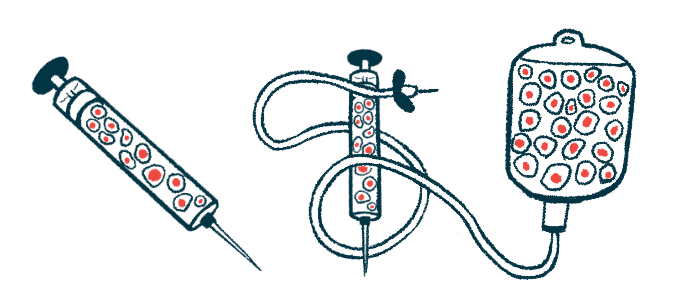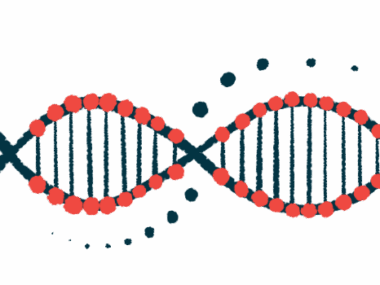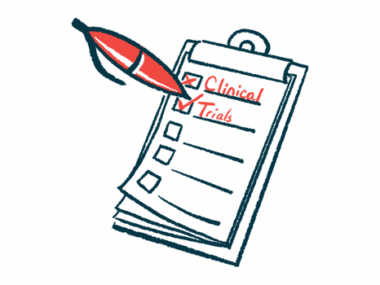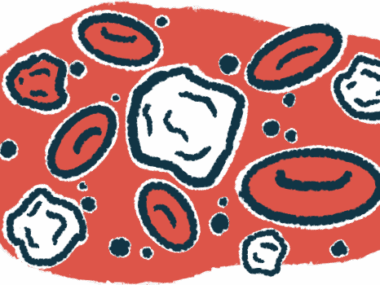Stem cell therapy found to reduce itch, pain in RDEB children in trial
Developer planning to seek approval of CORDStrom therapy this year
Written by |

The stem cell therapy CORDStrom, in the pipeline at Inmune Bio, was found in a clinical trial to reduce itch and pain in children — from infants to teenagers — with intermediate and severe recessive dystrophic epidermolysis bullosa (RDEB), new data show.
The treatment candidate also reduced disease activity and skin involvement for the study’s participants, who ranged in age from 6 months to 15 years.
These new data, from the MissionEB study (ISRCTN14409785), will support Inmune Bio’s plans to submit an application to the U.S. Food and Drug Administration (FDA) this year seeking the therapy’s approval, the company said in a press release. Inmune Bio also anticipates similar submissions in the U.K. and the European Union.
“CORDStrom represents the culmination of years of dedication by members of our cell medicines R&D team,” said Mark Lowdell, PhD, chief scientific officer at Inmune Bio. “The encouraging results from the blinded randomized trial in patients with intermediate and severe RDEB … validate our approach and strengthen our resolve to deliver life-changing therapies for patients who need them most.”
MissionEB study tested CORDStrom for intermediate and severe RDEB
Epidermolysis bullosa (EB) is a group of skin disorders marked by extreme skin fragility and blistering. One of its subtypes, RDEB is caused by mutations that disrupt COL7, a protein that links skin layers.
RDEB may cause widespread blistering and chronic wounds, severe scarring, and an increased risk of squamous cell carcinoma, a skin cancer. Over the long term, the disease is marked by a debilitating itch and pain that worsens wounds and affects the quality of life of patients.
CORDStrom is a medicine derived from human umbilical cord mesenchymal stromal cells, or MSCs, also called mesenchymal stem cells. These precursor cells can transform into various cell types and boost tissue regeneration, and have the potential to promote wound healing in people with RDEB, according to the company. The product is off-the-shelf, meaning it’s readily available.
The MissionEB study, led by Anna Martinez, MD, at the Great Ormond Street Hospital in the U.K., enrolled 30 children and adolescents with intermediate or severe RDEB.
All participants were randomly assigned MSCs or a placebo, given via an intravenous, or into-the-vein, infusion two weeks apart. After an outcome assessment at nine months, the children were then switched to the opposite treatment regimen, with two infusions of either MSCs or the placebo.
The trial’s primary outcome was a reduction in disease severity, as measured by the total score across all five domains of the Epidermolysis Bullosa Disease Activity and Scarring Index (EBDASI). Secondary measures included tests for itch, pain, and skin involvement. Efficacy was assessed three and six months after the first infusion.
Treatment led to a sustained reduction in itch severity in children
In children with severe RDEB, CORDStrom reduced itch at three months, leading to a sustained reduction of more than 27% at six months, according to Inmune Bio.
“These results demonstrate that a clinically meaningful reduction in itch severity is sustained over time,” the company stated in its release.
CORDStrom provided a broader range of improvements among those with intermediate disease severity, including less itch, pain, and skin involvement. Among children younger than 10, the stem cell therapy improved skin scores, indicating better skin integrity and reduced disease activity.
In interviews, both patients and caregivers correctly identified when they received CORDStrom or the placebo in the cross-over study.
Across all ages and severity subtypes, CORDStrom was well tolerated, with no serious adverse effects related to treatment.
[These trial results strengthen] our resolve to seek approval for CORDStrom in pediatric RDEB and expand the indications for CORDStrom as a drug platform in the future.
Eligible participants who completed the MissionEB trial may enter a 12-month open-label extension study. In this study, participants will receive three cycles of CORDStrom therapy at zero, four, and eight months, and disease severity will be assessed at the four-, eight-, and 12-month marks.
“We are heart warmed by the feedback from patients in the MissionEB study [and] the dedication of Dr. Anna Martinez and her group of investigators in completing this trial,” Lowdell said.
Lowdell said the study results, combined with the positive patient feedback, “[strengthen] our resolve to seek approval for CORDStrom in pediatric RDEB and expand the indications for CORDStrom as a drug platform in the future.”
CORDStrom has been granted both rare pediatric disease designation and orphan drug status by the FDA. Those designations incentivize the development of treatments for diseases that affect fewer than 200,000 children in the U.S.
If the FDA ultimately approves CORDStrom, Inmune Bio will be eligible to receive a priority review voucher, one of the incentives provided by the rare pediatric disease designation. Vouchers can be used to review a subsequent application of another treatment faster or transferred or sold to another company.







